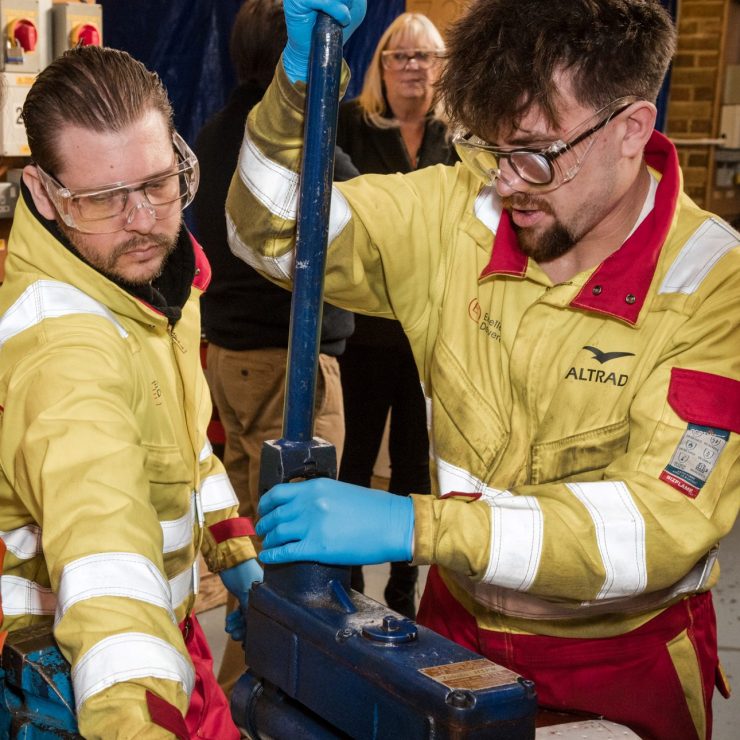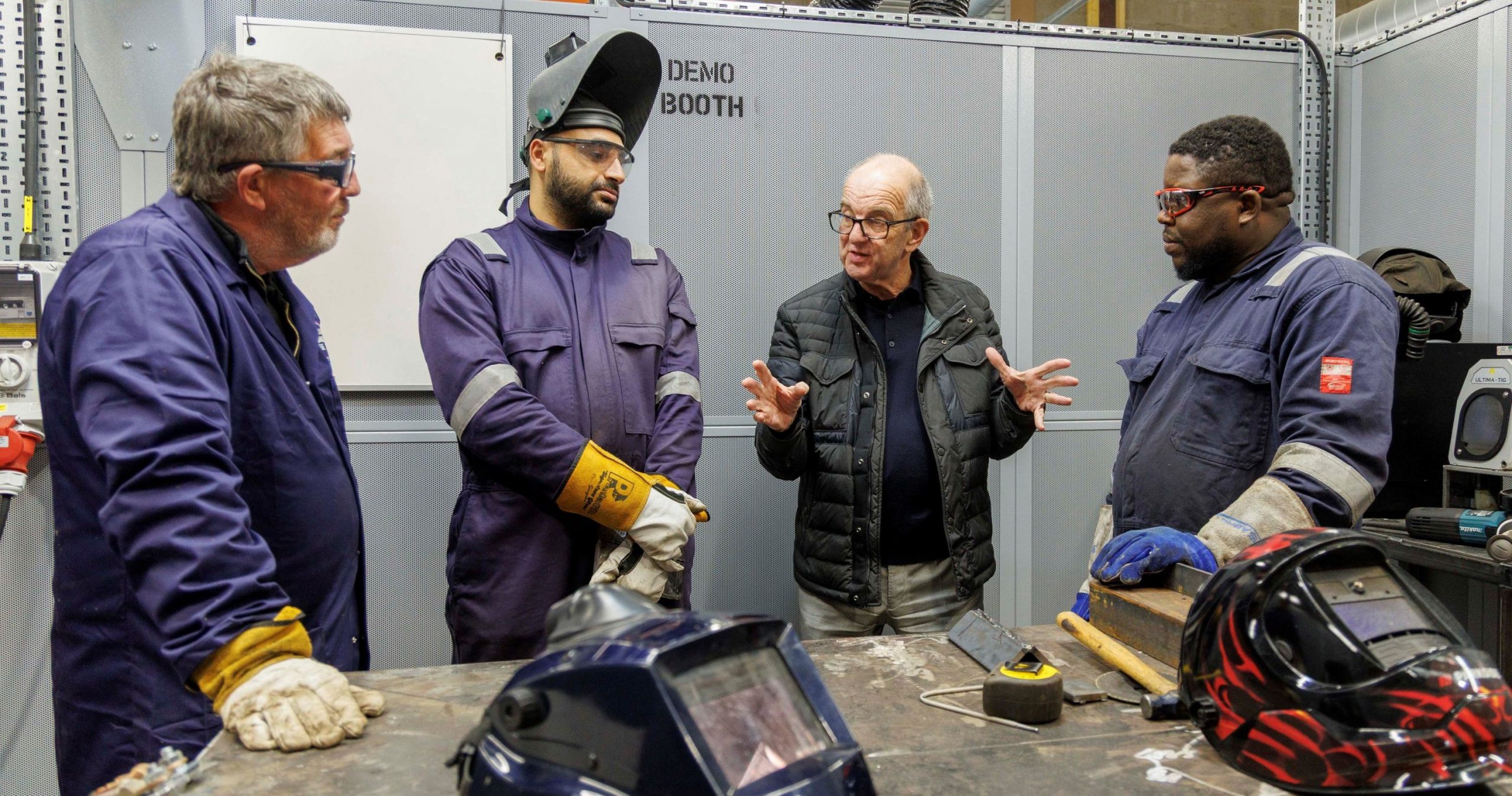New research published today reveals that the engineering construction industry (ECI) could now face peak demand for workers in five years’ time.
The ECI plays a crucial role in the UK meeting its net zero ambitions, spanning sectors that focus on the construction, maintenance and decommissioning of heavy industry, including oil and gas, nuclear, power generation, renewables, chemicals, carbon capture and storage, hydrogen and water treatment.
The Engineering Construction Industry Training Board’s (ECITB) Labour Forecasting Tool (LFT) provides insights into workforce numbers across regions and sectors, predicting trends and potential future demand for workers in the industry.
Labour Forecasting Tool - updated predictions
When it was first launched in November 2023, the tool predicted 40,000 extra workers could be needed by 2028, taking into account retirements.
The ECITB’s updated forecast states that this figure remains unchanged, but indicates that peak demand has now shifted to 2030. Factors include delays in some projects that now coincide with other planned activity, along with an upcoming wave of possible retirements in key roles.
The LFT reveals the size of the overall ECI workforce could total more than 135,000 workers in five years’ time to meet demand, an increase of 19% on the current number of workers in industry.
The tool had previously stated there could be a 28% increase in demand for workers by 2028. This percentage decrease suggests industry has been recruiting successfully in the last two years to build the workforce needed for current and future projects.
In 2023, the estimated size of the ECI workforce was just over 101,000, but this has since increased by 13,000 to sit at 114,000 in 2025.
Should labour demand be met each year, the tool highlights that 2026 will be a pivotal year, with nearly 4,400 additional workers potentially needed next year.
Occupations most in demand will include mechanical fitters, electrical technicians, process engineers, project managers, pipefitters, welders and design technicians.
The latest predictions are the most detailed yet from the tool. It was updated using findings from the ECITB 2024 Workforce Census and publicly stated timescales on 3,000 active and future ECI projects.
Working with the engineering construction industry

“These updates to the LFT give us the latest picture of future labour needs. It provides a strong evidence base to inform decision-making in helping address ECI skills shortages, which is central to our Leading Industry Learning strategy.
“2025 is the final year of our current strategy. But this is not just the ECITB’s strategy – it is our industry’s training and development strategy that ensures the ECI develops the generation-defining skills and workforce landscape needed to meet demand.
“This is why we’ve been consulting with industry in a series of workshops throughout April and May to help shape the future of engineering construction.
“Our new strategy will be published in September and will guide skills development across the industry for the next five years. It will aim to grow the number of new entrants, support employers to attract a more diverse talent pool and enhance workforce competence to ensure learners are both skilled and safe.
“But we recognise that addressing skills shortages requires a collaborative, multi-agency approach that includes employers, governments, training providers and the ECITB.
“So, we’re calling on all of industry to work together to help increase the pool of people joining the ECI, while continuing to train and upskill existing workers.
“By investing in the workforce, the industry has a fighting chance of closing the skills gap and ensuring the ECI has the skilled workforce it needs both for now and the future.”
Andrew Hockey
ECITB Chief Executive

Impactful labour market intelligence
As well as providing industry with a more up-to-date snapshot of future labour demands in the ECI as part of a best-case scenario, the tool has also been updated to provide predictions based on other scenarios.
Users now have the option to explore different scenarios to assess the impact of project delays or cancellations on demand.
The revised predictions were possible thanks to a record response rate from industry employers for the latest iteration of the ECITB Workforce Census.
The ECITB Workforce Census 2024 offered a comprehensive overview of the ECI workforce, covering distribution across sectors and regions, demographic trends, hiring challenges and business opportunities.
The ECITB received responses from 162 establishments in May and June 2024, collecting data on 78.8% of the ECI workforce, up from 54% in 2021.
Pictured: Learners on the ECITB Work Ready new entrant programme at SETA in Southampton. Photo by Dave Dodge.
Andrew added: “A key objective of the Foundations pillar of our strategy is to produce impactful labour market intelligence to enable data-driven decision-making.
“The significant Census response rate enabled the ECITB to provide more precise, up-to-date data for the benefit of industry. It allows us to improve the LFT to help make better predictions on future workforce trends and labour demands.
“The updates to the LFT reinforce the scale of the challenges facing industry that were outlined in our Workforce Census Report, which revealed that 71% of ECI employers are experiencing challenges in hiring workers.
“It also highlighted that despite an increase in the number of workers under 30 now working in the industry, this is not yet sufficient to counterbalance the impact of the upcoming wave of possible retirements, with the share of workers over 60 increasing to 14.7% of the ECI workforce, up from 11.6% in 2021.”
The ECITB Workforce Census and the LFT have contributed – either through direct ECITB involvement or as a data source – to the development of strategies aimed at addressing skills shortages and ensuring that the needs of engineering construction projects are properly understood and analysed. Examples include reports related to the national infrastructure and construction pipeline, sectoral and regional skills gaps and the Government’s Clean Power 2030 Action Plan.





